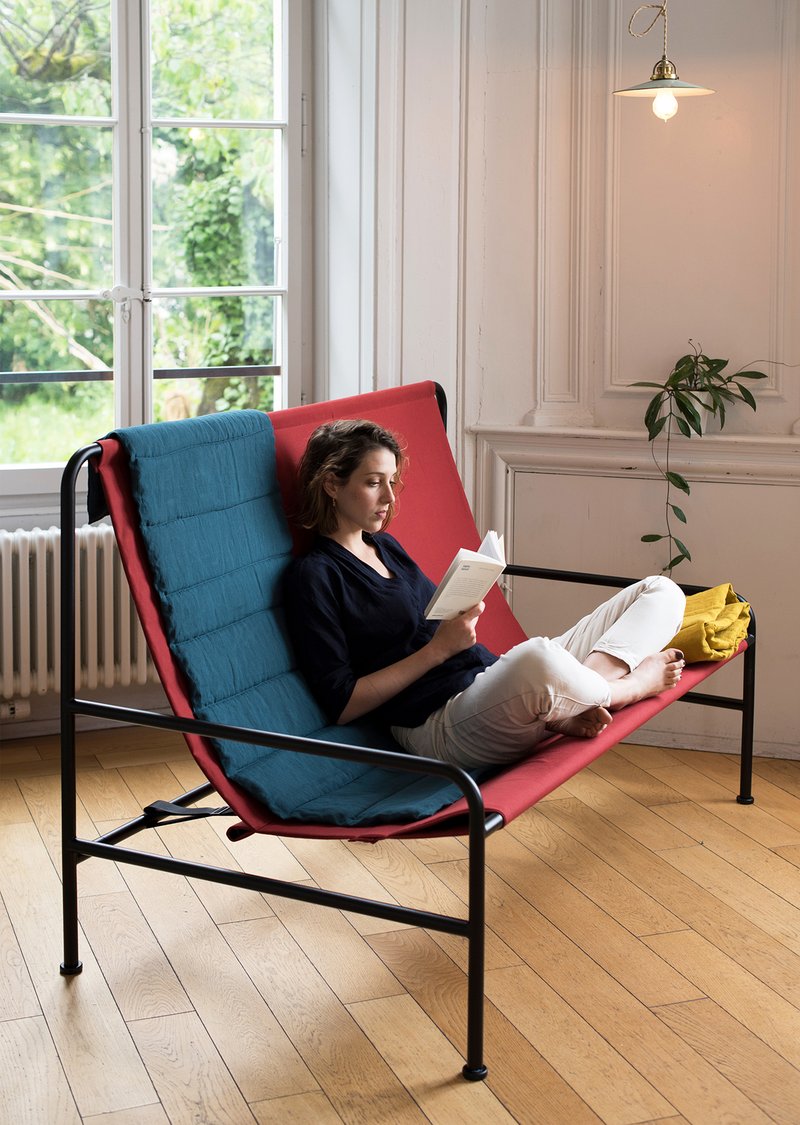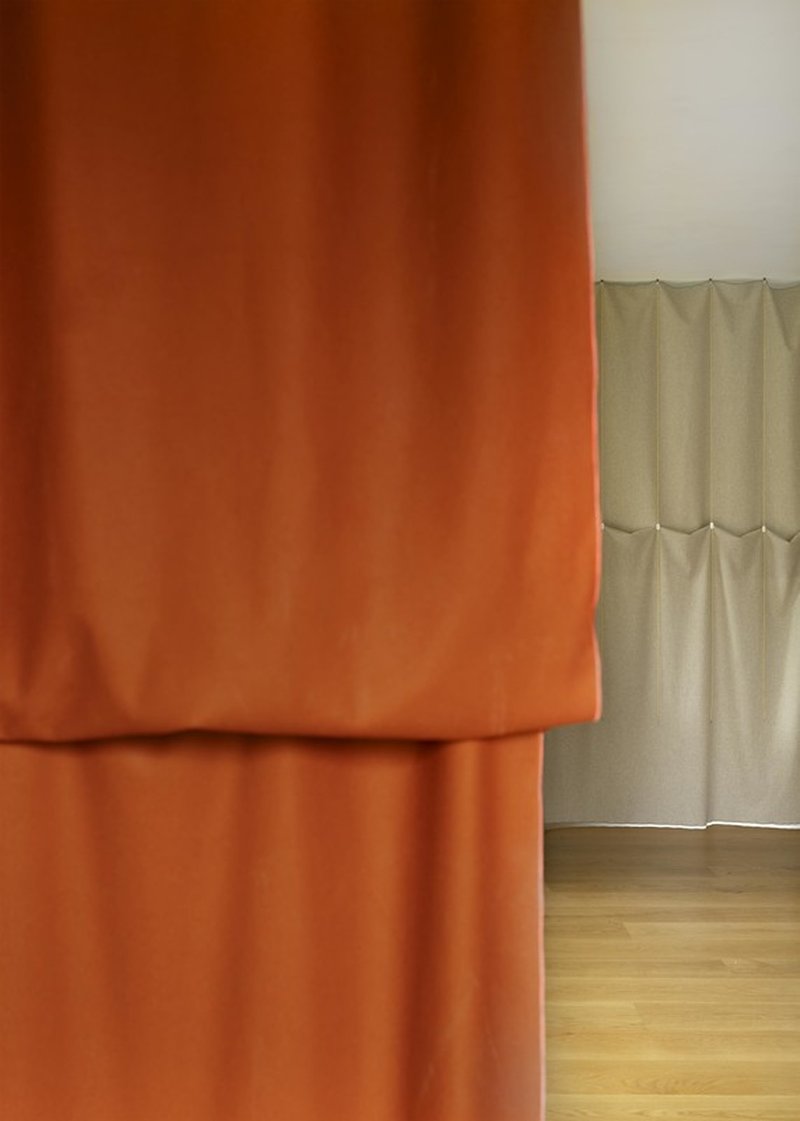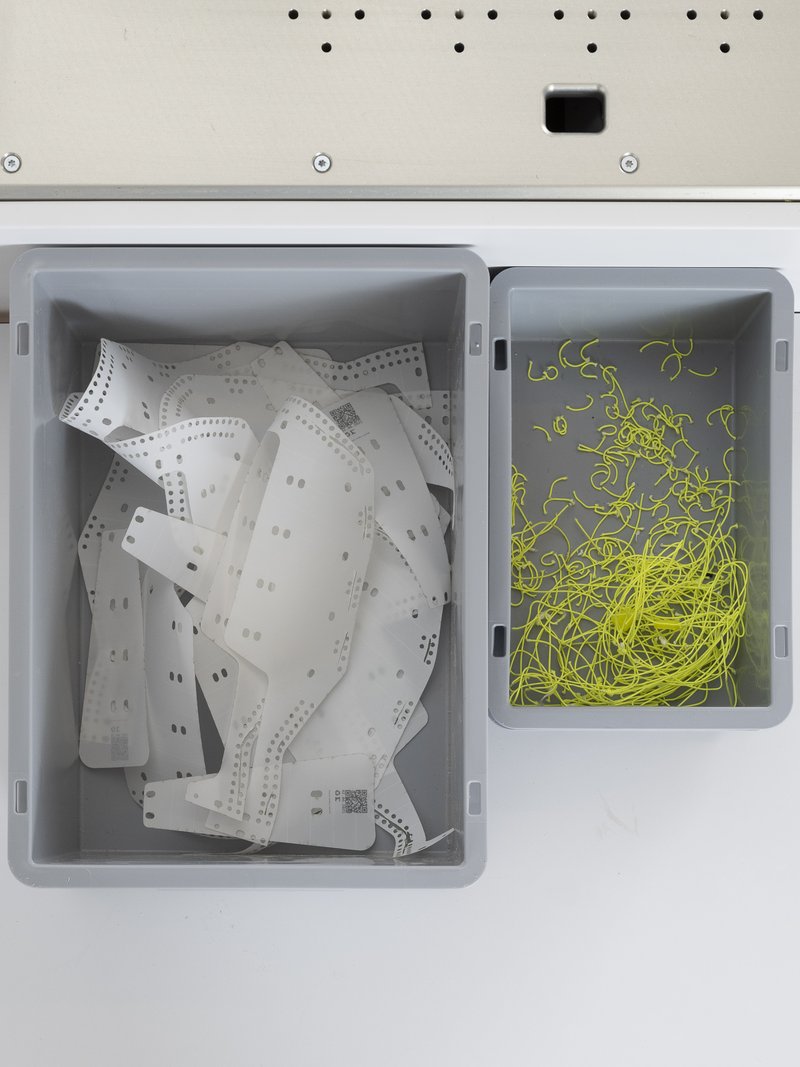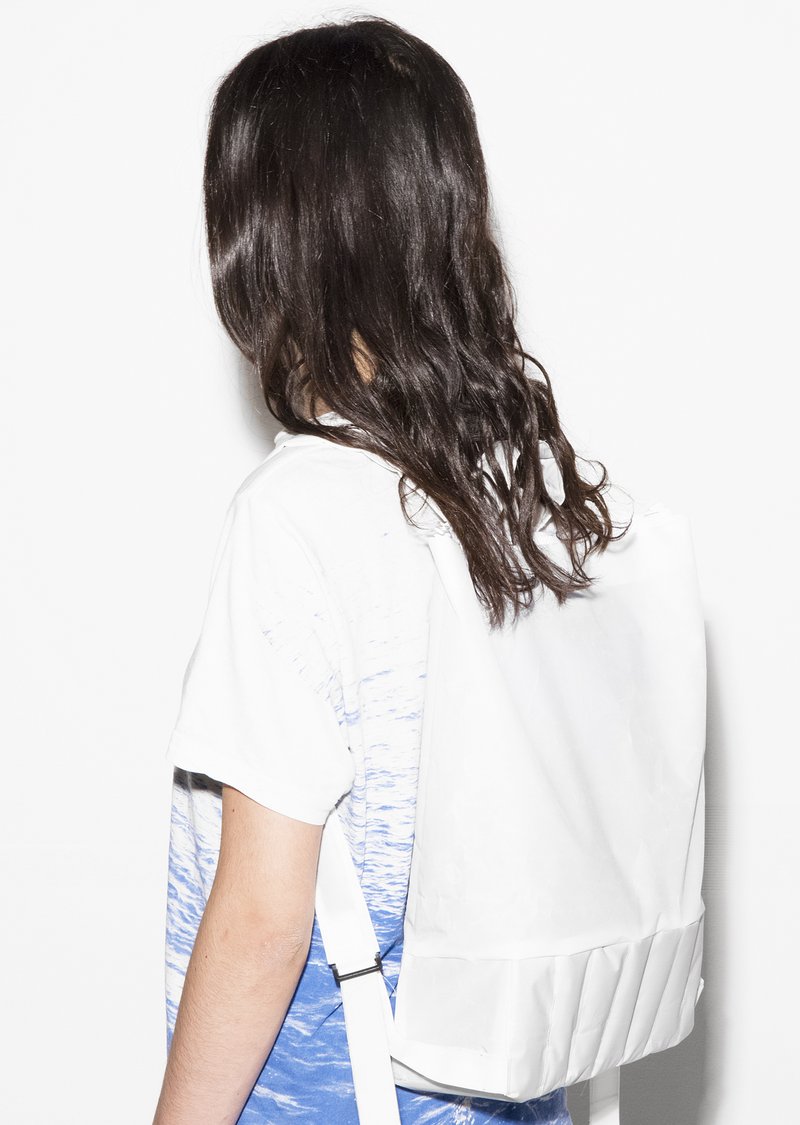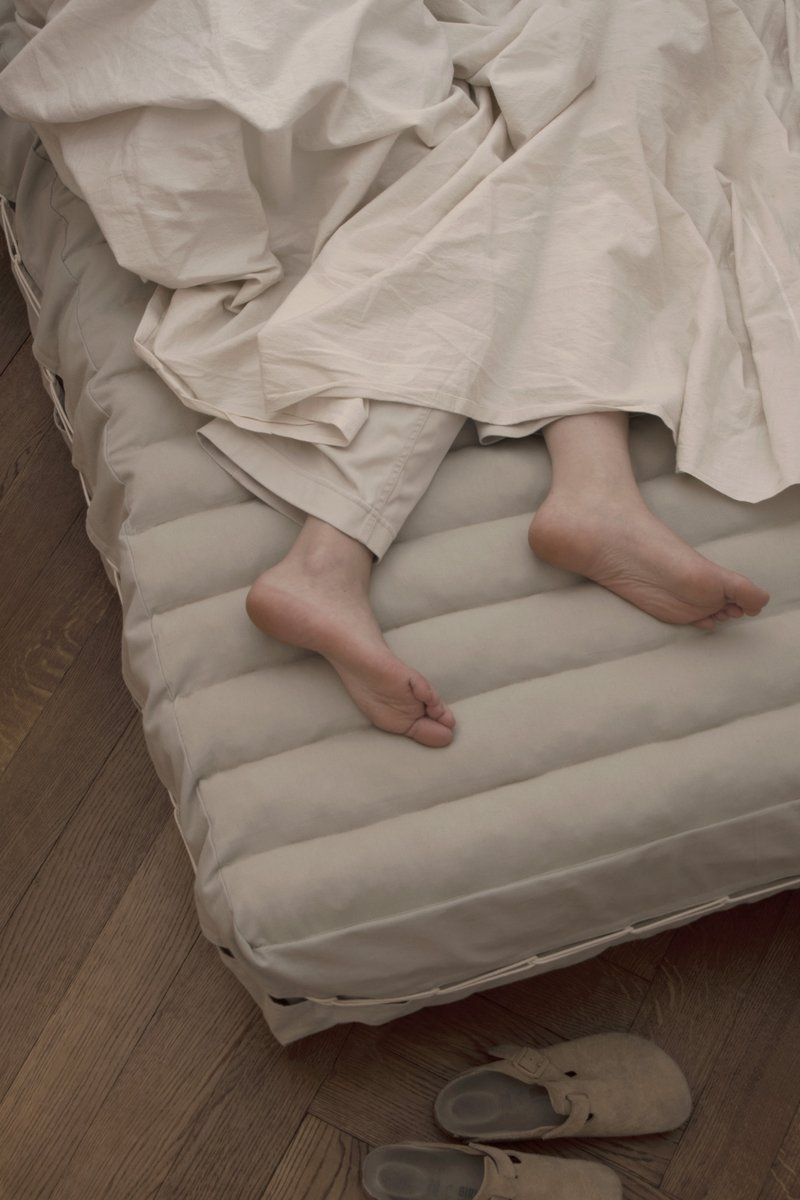
BA INDUSTRIAL DESIGN
Noémie Soriano – Matalàs
with Maddalena Casadei, Stéphane Halmaï-Voisard
Every year more than 30 million mattresses are thrown away in Europe. Despite the establishment of dismantling centres, only half of these mattresses are recycled. Those whose materials cannot be separated end up incinerated. This is due to the excessive use of glue and the mixing of different materials. Matalàs offers an alternative to this problem by taking into account its recycling from the design stage. Designed in three parts, it facilitates the extraction of wool and springs, thus becoming part of a circular economy.





















